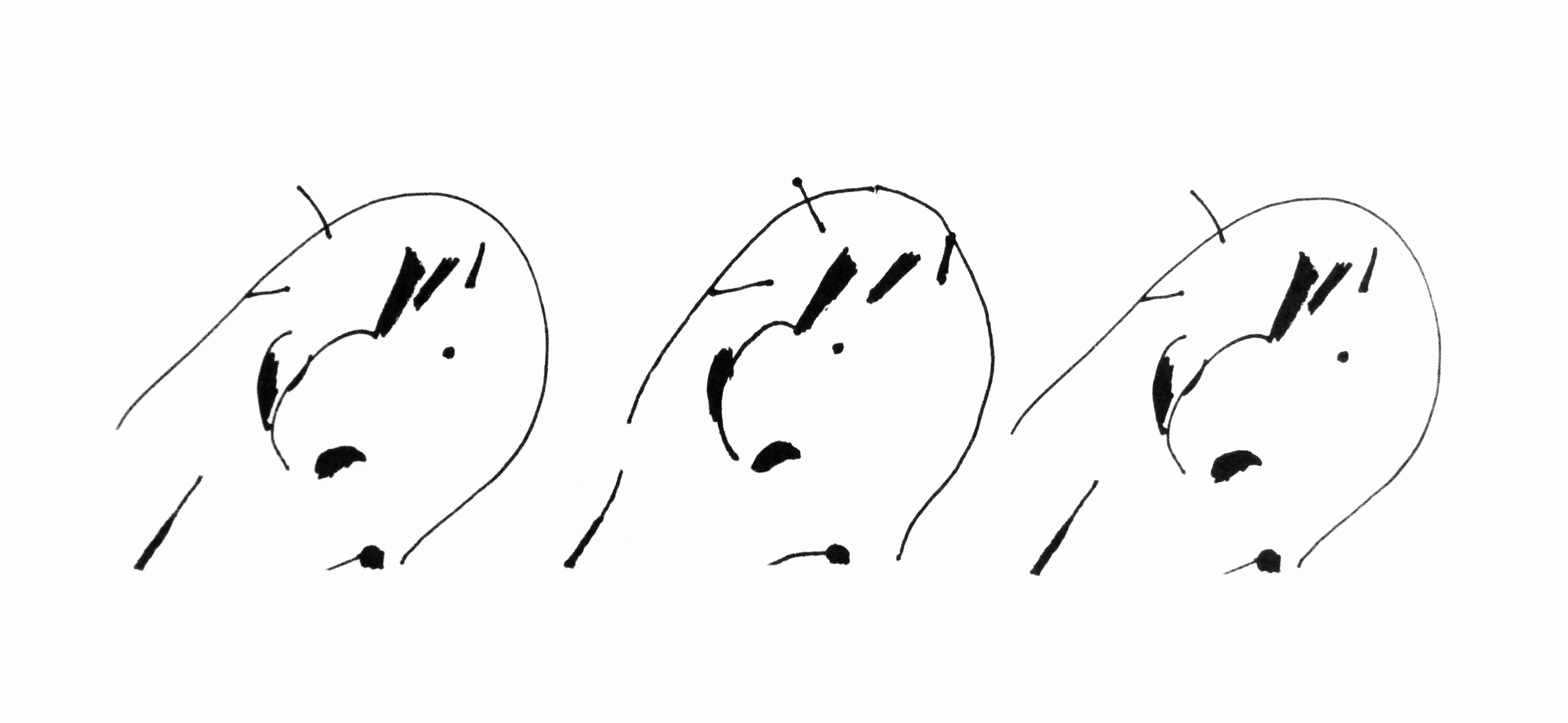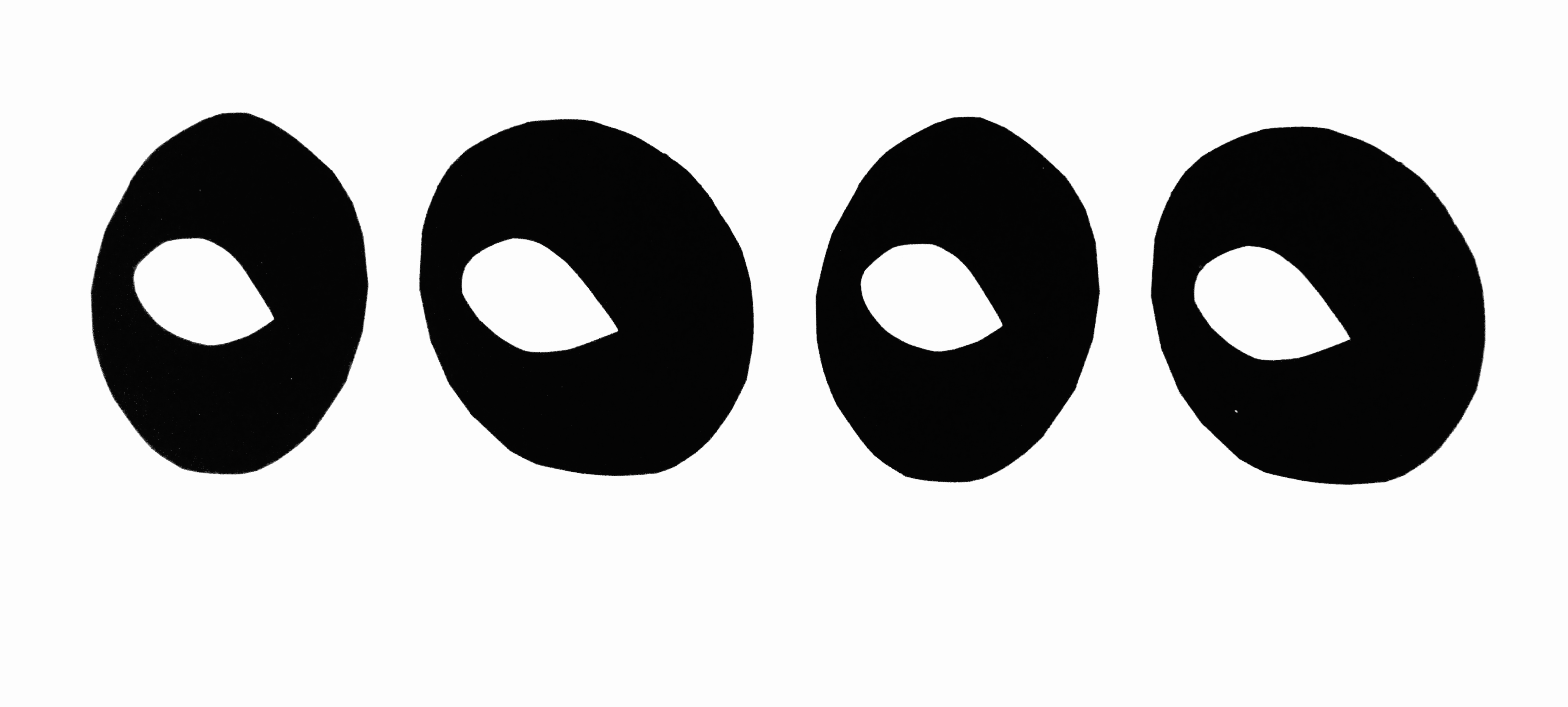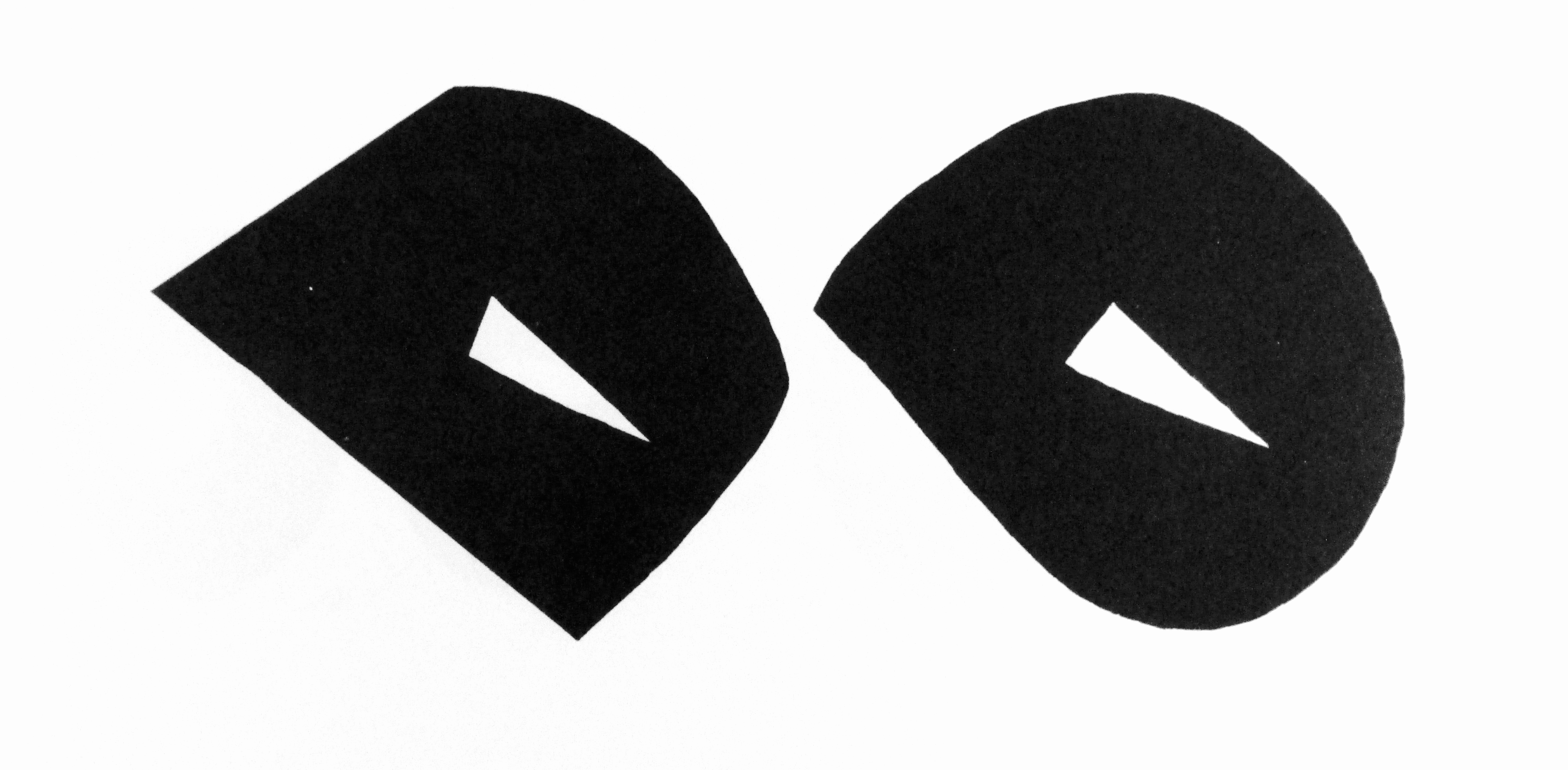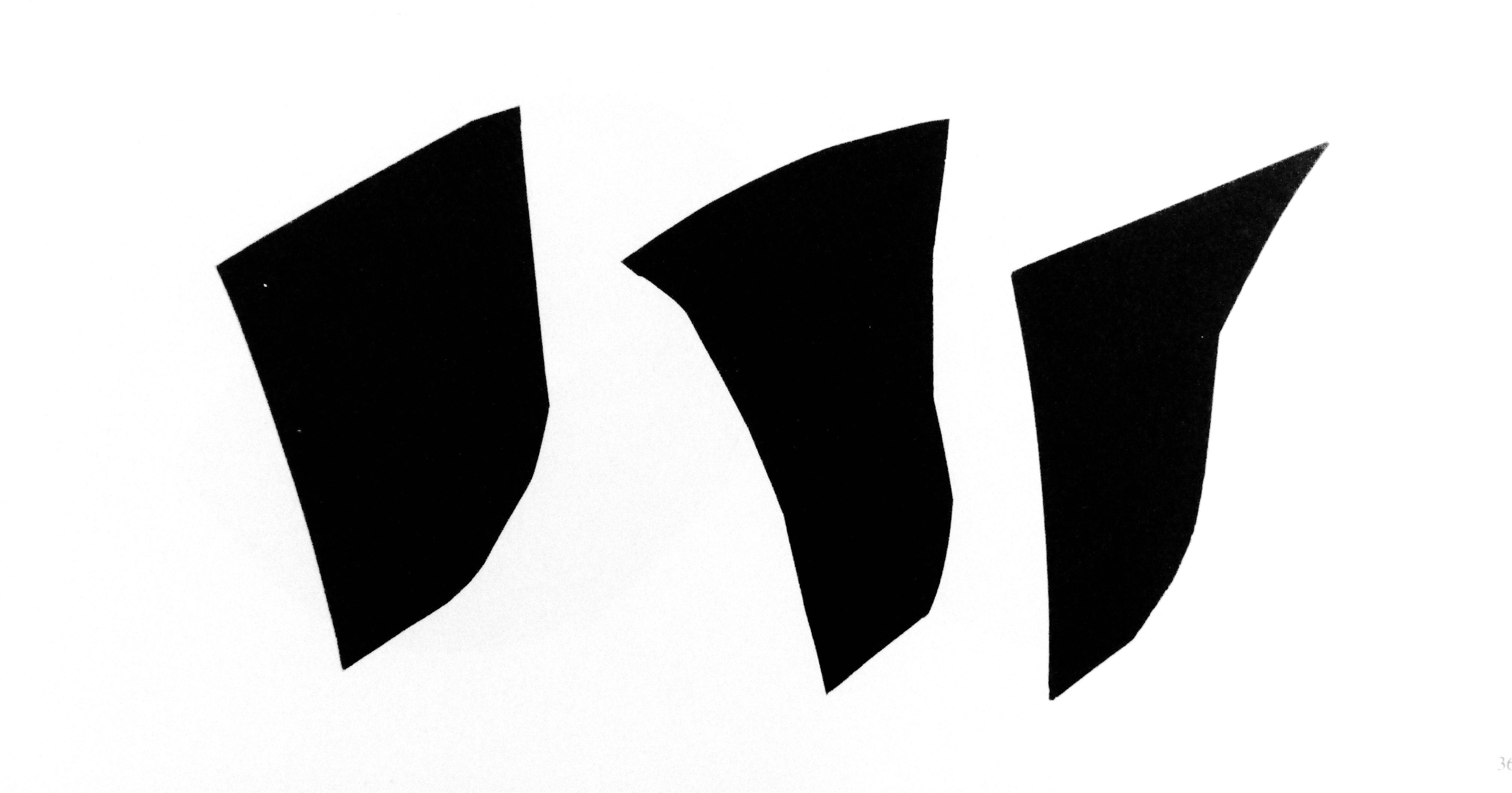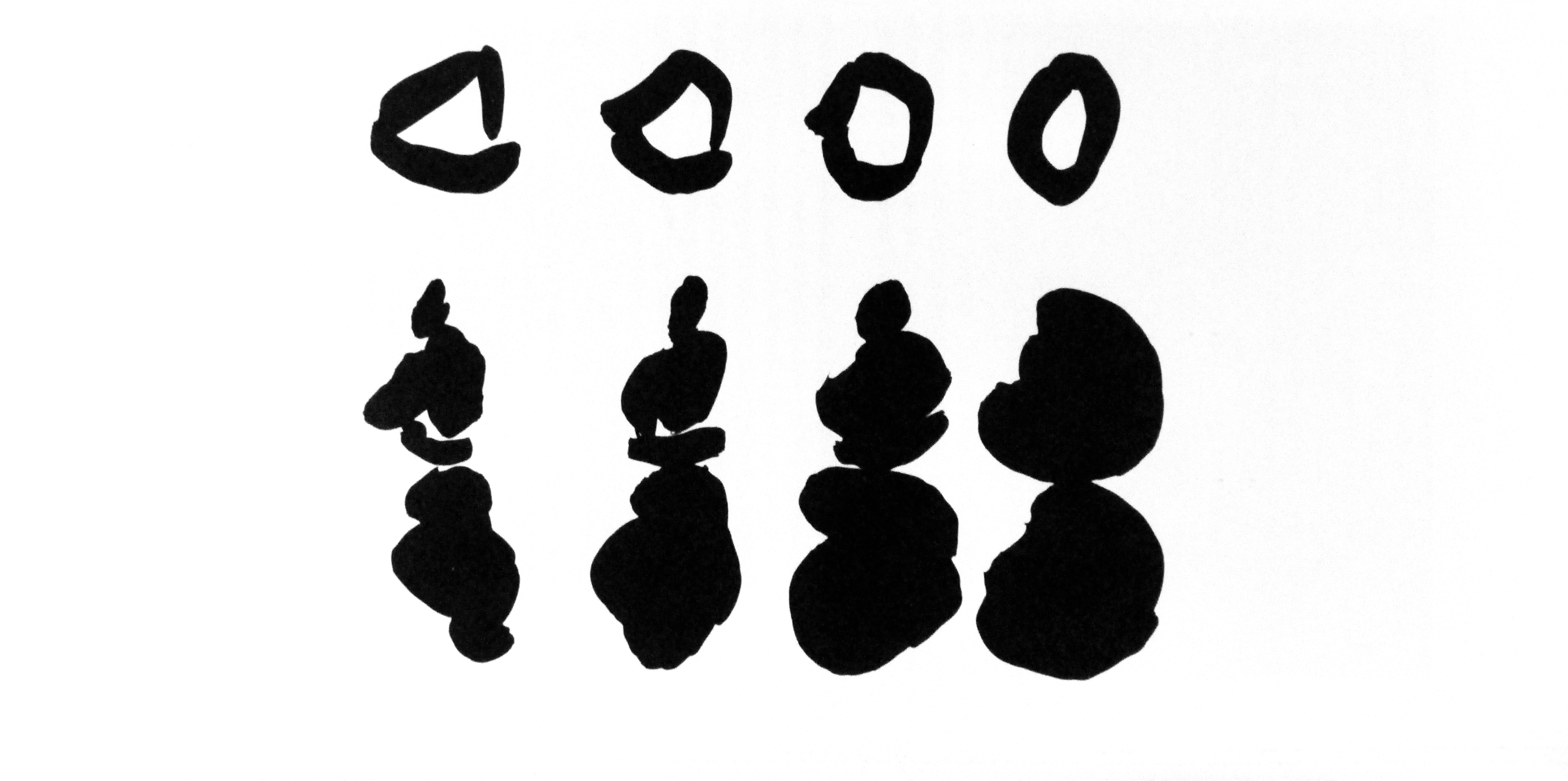[ The ask here, reader, is for you to do something likecrossing your eyes in engaging with each visual piece (image-set).Try phone horizontal or view on a desk screen. — Eds. ]
Unlike those of my competitors in the 3-D art business, these pieces last. No instant pop-ups, with nothing more for the viewer to engage in than passive accounting of things fixed in space. Nor zap comin'at'ya's to dodge and dismiss. Here things strain to be! Indeterminacies approach corporeality, only to deny it—that's deep. See them absorb and batten on time, like other dramas. Given time, they reveal further unexpected nuance of shape and placement; they become telling… with your gain of control in working them. For this is needed eyeballs with muscles! Flaccid starers, don't apply. You're halfway there, simply reading this with left and right sightlines angling in to meet at this period. Keep the picture level, and angle further, so that one (only one) additional image joins the set observed. If, when observing a set of two forms, four appear, angle further; a grand fusing will occur, with the new center figure a glorious hallucination in depth. Don't look away, don't tilt, left or right. Hang in, calmly, allowing things to detail and expand, shift and struggle. Some pairs will stabilize, some determinedly won't. On multiple sets, all but end-forms will swell and hover. Let end-forms attend as decorative chorus, or ignore them, or block them from peripheral vision with your hands, paper blinders, two bathtubs. Let's have no crap about "headaches!" 3-D and headaches…is a cyclopean calumny. They like things flat. If the intriguing resistance you encounter proves a bit much, close your eyes and let any fatigue pass, then gaze a moment into the distance, and go at it again. This angling is a facility two-eyed people have… to develop, and derive an art of, or abandon to atrophy.
Sometimes it helps to start off training the eyes at an upright finger held just under the middle of an image-set, but suspended some distance before it. Slowly move your finger forward or back until that additional fused shape occurs, and while fixing on that miracle emergence, withdraw your finger. Viewing through a small rectangular frame, the opening 2 to 2 1/4 inches square, eases the process (tape 1 1/4 inch strips of paper or cardboard into a frame). Interesting to look at from different distances, and/or while slowly moving to different (perpendicular) angles of view. Upside-down is rewarding. Except for the squared set of four, you will not be able to birth stereo looking at the sets stacked vertically, unless you have one eye set above the other. In which case, contact me; we can still do business.
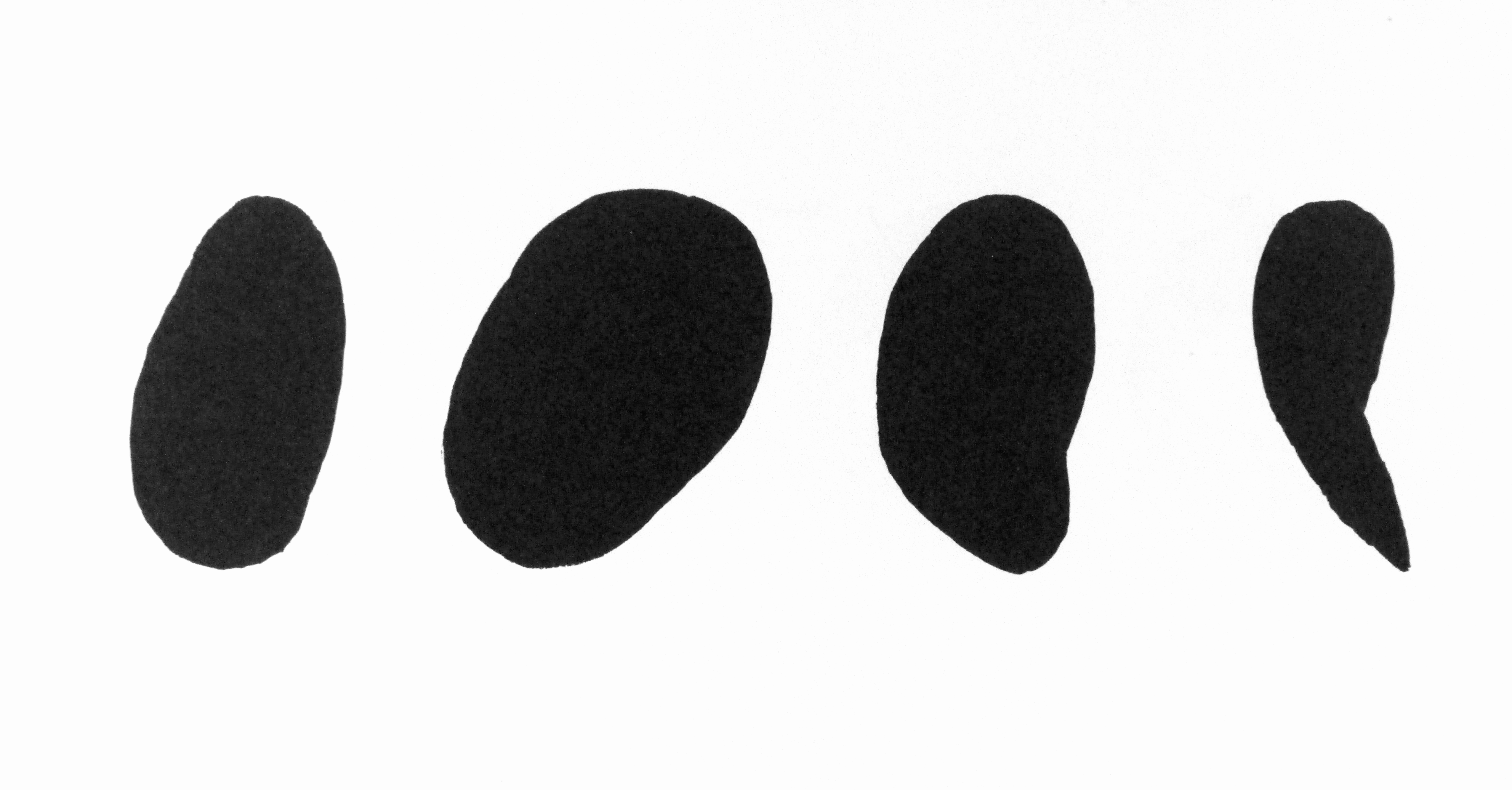
So you know we're seeing eye to eye I'll describe some of what's happening for me in the set above. Three flattened oblongs stretch forward, Center furthest. Right and Center lean left and down in front; Left aims past my right ear. Edges are sharp in front, thickening lumpily to the rear. Forms are bent in their middles as if squeezed. Center front twists right and towards the horizontal, it's rear vertical. Impossible to resolve Center front and rear simultaneously (front and bottom edge remains very restless). Ditto Right, not so extreme as Center. Right front overlaps rear, rear curling under and behind front; shape resembles an ear seen from under the lobe. Left pulls in two directions, aspires forward, plunges rear. Left seems restrained by weight of Center and Right pressing in parallel towards it. My gaze moves into the corridor of space between Center and Right. A long tense pull across open space exists between Left rear and Center front.
